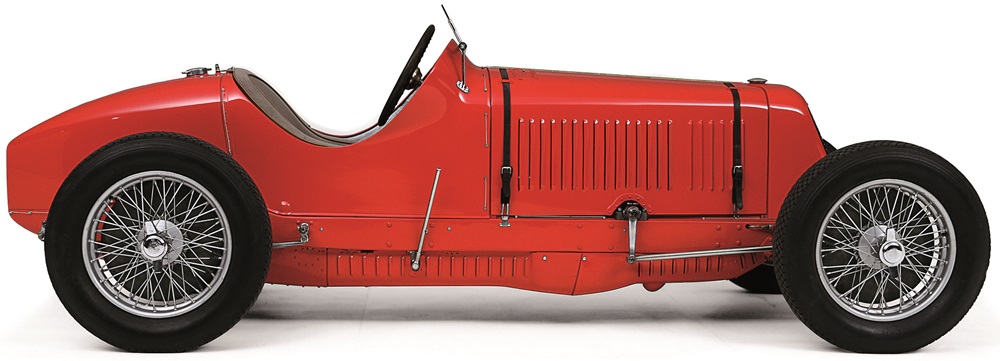1933 Maserati 4CM 2000

The descriptions of the Classic Cars in the Directory were partly generated or supplemented with the help of artificial intelligence (AI). The content may occasionally not always be entirely accurate or factually correct despite careful checking.
The Maserati 4CM 2000 was a racing car produced by Italian automaker Maserati in 1933. It was designed with the intention of participating in long distance endurance races, which required a car with a combination of speed, power, and durability. The 4CM 2000 satisfied all these requirements with its advanced technical features and engineering.
At the heart of the Maserati 4CM 2000 was the advanced engine, which delivered an impressive 110 horsepower at 5,500 rpm thanks to its innovative design. The engine was a 4-cylinder unit with a 1995cc capacity, which meant that it could reach speeds of up to 170 km/h on the track. Furthermore, the engine was equipped with a supercharger, which was a new and innovative feature at the time. This allowed the car to maintain its power output even at higher altitudes and lower air pressures.
The Maserati 4CM 2000 had a front engine-mounted layout with a four-speed manual gearbox, which provided robust and precise handling on the track. Furthermore, the car's suspension system, which consisted of a single transverse spring with hydraulic shock absorbers, provided excellent handling and stability, even at high speeds. These features made the car a popular choice among racing drivers of the time.
The exterior of the Maserati 4CM 2000 was also designed with aerodynamics in mind. The car's sleek lines and rounded bodywork improved its efficiency, while the wide and low stance of the car provided increased stability on the track. The car's lightweight construction also contributed to its speed, making it a formidable opponent in racing competitions.
Overall, the Maserati 4CM 2000 was an impressive and innovative racing car, designed with advanced technical features that set it apart from its competitors. Its powerful engine, robust handling, and aerodynamic design made it a popular choice among racing drivers of the time, and its engineering continues to inspire and influence modern racing car designs.
Milestones
- 1933: Maserati releases the 4C, a sportscar featuring a 1.5-liter engine and sleek, aerodynamic design. - 1933: Later in the year, Maserati offers a high-performance version of the 4C, known as the 4CM. - 1933-1934: The Maserati 4CM is raced in various events, including the Tripoli Grand Prix where it finishes in a respectable 4th place. - 1934: The Maserati 4CM is modified to feature a 2.0-liter engine, increasing its power and speed. - 1934-1935: The Maserati 4CM competes in multiple races, including the Targa Florio and the Grand Prix de Pau, achieving multiple podium finishes. - 1935: Maserati introduces the 4CS, a further evolved version of the 4CM with an even more powerful engine and refined design.Technical
• The Maserati 4CM 2000 was launched in 1933, as a racing car.• It was powered by a 2.0 liter, 4-cylinder engine, that produced 180 horsepower, making it one of the most powerful cars of its time.
• The engine was mated to a 4-speed manual transmission, and the car had rear-wheel drive.
• The chassis was made of tubular steel, which made it very rigid and light.
• It had a top speed of around 160 km/h (100 mph), and could accelerate from 0-100 km/h (0-62 mph) in just 8 seconds.
• The 4CM 2000 had a stylish and aerodynamic body, which was designed by Felice Mario Boano.
• It had a short wheelbase of just 2,600 mm (102.4 in), which made it very responsive and agile.
• The suspension was independent at the front, and solid axle at the rear, with leaf springs.
• The brakes were hydraulically operated, and consisted of 4-wheel drum brakes.
• The Maserati 4CM 2000 was a successful racing car in its time, and was used in many competitions, including the Mille Miglia, Targa Florio, and Grand Prix races.
